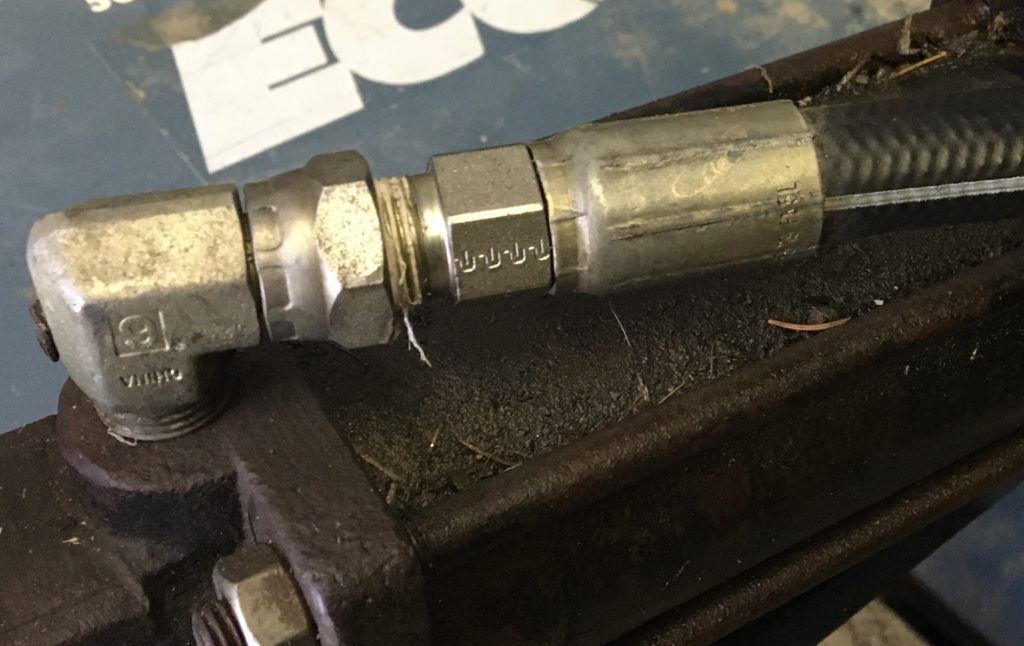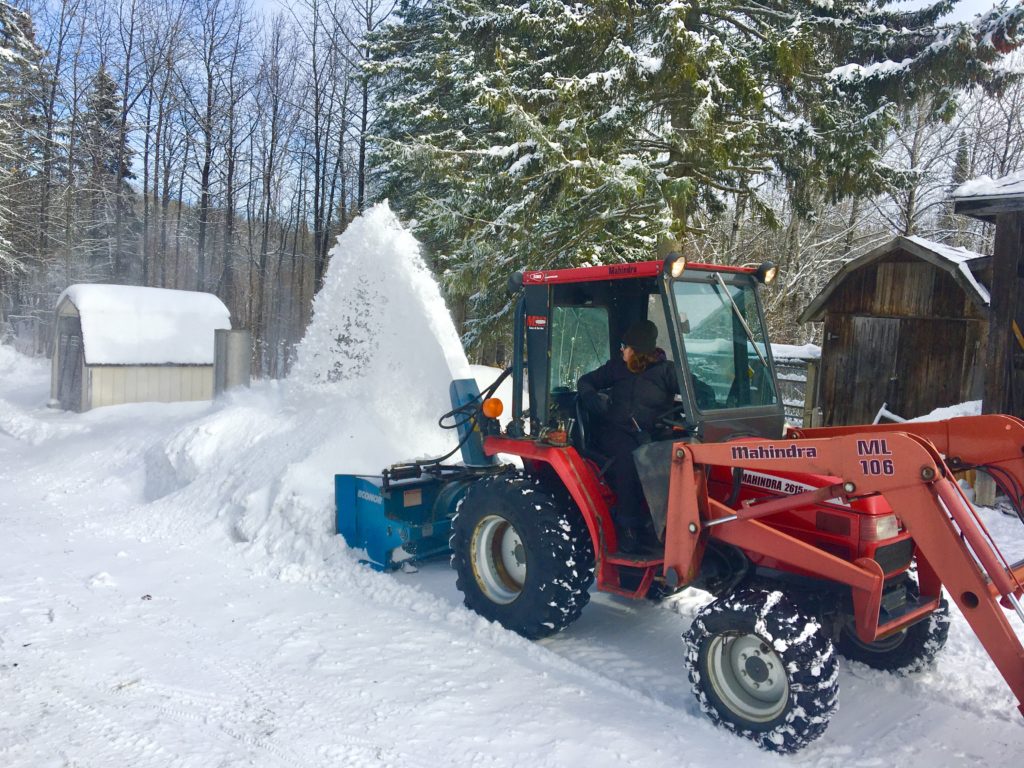A well-running tractor is this homesteader’s best friend

I am perfectly aware that there are a great many people who live full, productive and happy lives without a tractor. I’m just not one of them. In fact, I can’t even begin to imagine life on Rusty Metal Farm without my trusty tractor.
These days my motorized beast of burden is a 2006 Mahindra 27 horsepower compact farm tractor and she’s a dandy little rig. She came all manner of implements including with a front bucket scoop, a rear-mounted brush mower, a grader blade and — best of all — a rear-mounted commercial grade snowblower.
Trust me, when you live in a part of the country where the average snowfall is measured in feet, you want a snowblower with a bit of umph to it.
Last week, my friend Pete, who occupies the apartment above the shop where the tractor lives, and I teamed up to hook the blower up to the tractor for the season. The first major storm up here was just about to hit.
There are eight points of connectivity between the tractor and the blower. There’s the three-point hitch — three metal “arms” that physically hold the blower to the tractor and allow me to raise and lower it. There’s the power-take-off — or PTO — that transfers power from the tractor along a spinning shaft to the blower to power the auger that sucks in the snow. And there are the four hydraulic lines that control the angle and direction of blowing snow.
The three-point-hitch and the PTO went on fairly easily, though both Pete and I had pretty greasy hands by the time we were done with those steps. Next came the four hydraulic lines. Now, hydraulic lines are filled with fluid and that fluid operates under pressure supplied by a pump on the tractor installed next to the driver’s seat. For example, one of the lines running from the pump through the line to the blower is connected to a fitting which rotates the blower’s snow chute to the right when I pull the lever that opens the valve releasing the hydraulic fluid. When I pull the lever back, the pump forces the fluid along a different line, rotating the chute in the opposite direction.
Hydraulics operate under tremendous pressure, so when Pete and I went to connect the lines running from the blower to the tractor, it took a great deal of brute force to push the lines in far enough to the fittings that they set and sealed properly.
Brute force and a hammer. Using an old farmer trick, I took a round metal tube and placed it inside the hollow fitting on the tractor where the line was supposed to go. Banging on that tube with the hammer, I was able to force the tractor’s hydraulic fitting to open just enough to release enough hydraulic fluid to bring the pressure down to a manageable level.

It also left me covered head to toe with hydraulic fluid. Who doesn’t love the taste, smell and feel of hydraulic fluid in the morning?
Lines, arms and PTO installed, it was time for a test run and safety check.
Slowly I pulled the tractor out of the garage and engaged the PTO while using the 3-point-hitch lever to raise and lower the blower. Everything spun and moved as it should.
Next, I toggled the levers on the hydraulic pump and was quite pleased to see the blower’s chute turn left to right and it’s articulated “head” move up and down.
All systems appeared to be “go” as I hopped off the tractor to inspect the blower from the ground. But in looking at the hydraulic lines connected to the blower it was a case of “Rusty Metal Farm, we have a problem.”
Hydraulic fuel was pouring down the side of the blower. That is never a good thing. So, I turned everything off and Pete and I wiped down the blower so we could see exactly from where the fluid was leaking.
It didn’t take long to spot the offending area — one of the fittings on the blower had come loose somehow, and every time pressurised hydraulics were going through that line, they were oozing out of that fitting.
It looked like a simple fix — tighten two bolts that connected the line. Off I went into the shop to grab just about every wrench I own, since unlike most mechanics I am totally inept at eyeballing the size of a bolt. It could be anything from 1/4-inch to 2-inches.
Turned out, we actually needed two wrenches as there were bolts of two different sizes that needed adjusting.
Here’s where it gets tricky. While I have a pretty good handle on hydraulics, I am stymied by which way to turn bolts when the fix requires you work on two or more at the same time, rotating them in opposite directions.
Fortunately, Pete has the exact opposite skill set. He’s a genius on tool usage when it comes to repairs, but don’t ask him to explain hydraulics.
Between the two of us, we were able to complete the repair. Proof that on Rusty Metal Farm two brains, four hands and a pile of wrenches are better than one.
This past week we got the chance to put our repair work into action when we got enough snow to blow.

Everything went really well with the tractor, the snow was blown out into the woods and not a drop of hydraulics was lost. Okay, so maybe I did back into the aluminum ladder and knocked it over onto Pete. He’s fine — it was a glancing blow.
And, maybe, just maybe, I forgot to pull the tractor cab’s door shut before driving it back into the shop and darn near ripped the door off on the side of shop entry bay. But like most things on a homestead, tractor operations are a continual learning curve. And since winter is just starting, I’ve got months yet to perfect my technique. And buy another ladder.
